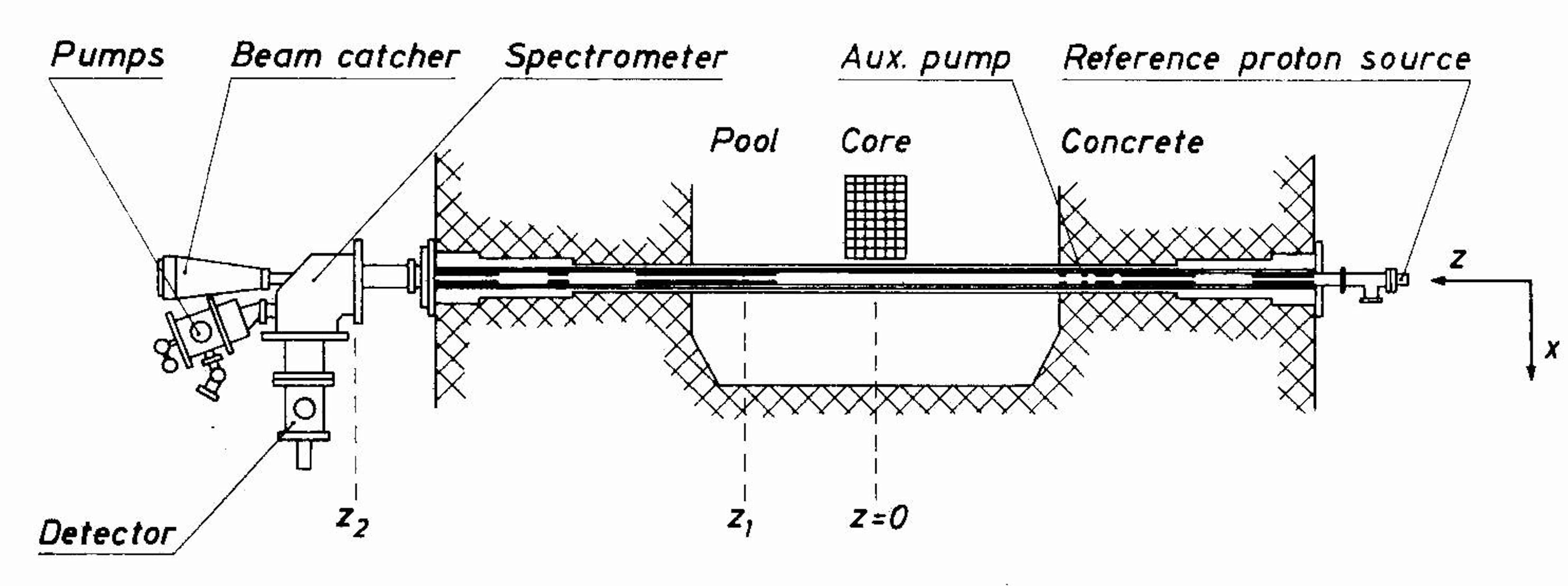
Neutron physics
Radiation and metrology
Mass-spectrometric gas analysis
Vacuum and surface technology
International relations and congress organization
In 1964, this multi-year project was initiated and started by P. Weinzierl, that time head of Seibersdorf's Physics Department, with Rudi's employment in the same year primarily aiming him to perform this experiment. After P. Weinzierl, H. Paul and P. Riehs had left Seibersdorf (they all had made essential contributions to this task), Rudi stayed alone with his team of students - in an atmosphere of severe criticism by the new administration on the design and feasibility of the experiment. Would there not have been permanent moral support from P. Weinzierl (that time full professor at University of Vienna), Rudi would not have been able to complete the experiment.
Some of Rudi's developments that are relevant for this experiment are described in Nucl. Instrum. Methods 118 (1974) 1-37. Altogether, 12 diploma and thesis students contributed to the success of the neutron decay experiment, some of them supervised by H. Paul and F. Viehböck before both left Seibersdorf around 1970. Final measurements started 1972 and could be completed 1978 within the thesis of a gifted student, Chr. Stratowa, who made essential contribuutions to the final measurements and data evaluation.
Result: By adding up multi-year measurement data, the electron-neutrino angular-correlation coefficient a was determined as - 0.1017 ± 0.0051, leading to a value
GA/GV = 1.259 ± 0.017
for the ratio of the axial and vector coupling constants in weak interaction
(Phys. Rev. D18 (1978) 3970)
-
still the most precise data for this fundamental physical constants achieved from a measurement on free unpolarized neutrons.
Method: Measurement of the energy spectrum of the recoil protons obtained from neutron decay.
Source: Decay protons produced within the "thermal neutron gas" in the innermost region of an evacuated tangential beam tube of the ASTRA reactor (position z = 0 in the drawing).
Energy spectrometer: Electrostatic spherical condenser outside the biological shield of the reactor, with the proton beam defined by apertures at z1 (within the 110 cm long Cu-collimator next to the core) and z2 (close to the spectrometer entrance).
Proton counting: Ion-electron-converter detector with coincidence counting technique applied (background approx. 1 to 2 cpm).
Reference proton source: System calibration by means of a proton beam produced by a conventional ion source.
Beam tube: In-situ bakable double-wall aluminum construction incorporating specially tailored Cu collimators (for attenuation of the primary reactor radiation) and a double-layer magnetic shield, consisting of 80 exactly adapted pieces and covering the complete beam tube together with the spherical condenser spectrometer and parts of the detector and reference proton source.
Vacuum system: A vacuum level in the
10-9 mbar range throughout the entire system was achieved by a completely oil-free uhv-system based essentially on a combination of getter pumps backed by an orbion pump (a high-speed electrostatic ion-getter pump).

In 1964, when experimental work was started, energy spectroscopy by spherical condensers and also ion-electron converter detectors were already state-of-the-art. It was the design and construction of the reactor beam tube that led to completely new territory. The main prerequisite was undisturbed transmission of the decay protons over the distance of 4,5 meters from core to spectrometer in order to prevent distortions of the energy spectrum of the protons under consideration. Given their energies of just 0 to 751 eV, this implied ultra-high vacuum (means a bakable beam tube and a radiation resistant uhv-pump close to the reactor core, operating many years without maintenance), highly effective shielding of magnetic fields, and also avoiding electrical charges on inside surfaces (e.g., due to secondary electrons caused by the gamma radiation).
The biggest challenge was the design and construction of a completely "open" reactor beam tube containing just ultra-high vacuum (instead of the usual axial absorbers) and still maintaining, at full reactor power, a background of less than 0.1 cps for the proton detector in the immediate vicinity of the beam-tube exit.
These were the main, and most controversial requirements for the neutron-decay experiment, and Rudi was under severe criticism for his design. The director of the institute was close to abandon the construction of the beam tube, would Rudi not have demonstrated - in a separate test run - the high efficiency of his novel "axial shielding" concept, and the actual low radiation level at the exit of the "open" beam tube.
Also a matter of controversy was Rudi's design of a completely oil-free ultra-high vacuum pumping system, comprising a nonmagnetic version of a ZrAl getter pump inside the beam tube in combination with an Orbitron pump and a high-speed Ti cryo-getter pump at the spherical condenser, and a conventional sputter-ion pump at the reference proton source. As the main gas load came about close to the reactor core, and as the conductance of the beam tube from core to the main pumping station outside the biological shield was just 4 l/s, the beam tube vacuum depended essentially on the performance of the aux.-pump - a modified ZrAl getter pump, a rather new type of pump that, moreover, was operated here for the first time in primary reactor radiation. Furthermore, in order to guarantee oil-free condition, high-speed cryosorption pumps have been developed for evacuation from atmosphere to high vacuum - thus allowing to start the orbion pump without any further auxiliary pump.
To meet all requirements, a many years' test program has been performed, dealing with thermal outgassing of aluminum, copper, stainless steel, etc. after moderate bakeout, reactor-irradiation induced outgassing of materials in question, electrical surface charges due to irradiation of wall sections by low-energy electrons, possible use and durability of soft magnetic materials within the reactor environment.
|